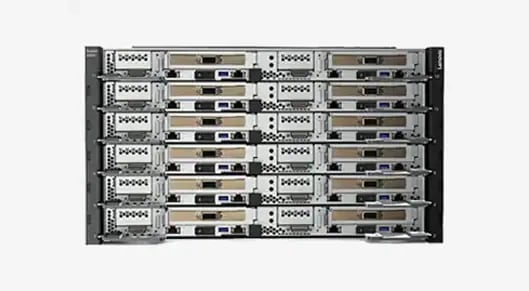A blade server often refers to high-density servers. It’s a compact device with a computer to manage and distribute data on various devices. The basic role of blade servers is to act as a conduit between computers, programs, applications, and systems.
Typically, a blade server consists of a chassis or box-like structure that houses multiple thin and modular electric circuit boards known as server blades. They are called blades due to their ultra-thin structure.
Each blade contains a server, often dedicated to a single application. The information is stored on blade servers as a form of memory card. However, individual blades contain processors, memory cards, or other devices. This includes a fiber channel host bus adapter and other input/output ports.
Benefits of Blade Servers:
Most blade servers are dedicated, meaning they are focused on single-use. This helps professionals gain more control over how data gets transferred across multiple devices. Some of the crucial benefits of blade servers are given below:
-
High-Trust Compatibility:
The nature of servers that carry out highly individualized tasks This makes it possible for an organization to dedicate a single server entirely to mission-critical applications. With these programs and applications, you cannot handle the critical projects of an organization.
Blade servers are built to use less power. Because multiple servers are housed in a single chassis, each server requires fewer parts to function. This makes a big difference in how much power each server requires. These servers allow you to pack a lot more computing power into a small space. When comparing power costs per server or power to computing ratio, blades are very efficient and save money on power costs.
With their modular design and high scalability, these servers are hard to ignore as a solution to many problems faced by data centers. The modular design allows for easy integration of cutting-edge technologies, such as solid-state drives (SSDs) and high-speed networking interfaces, enabling exceptional data processing and transfer speeds.
This performance advantage translates into improved application responsiveness, faster data analysis, and seamless handling of demanding workloads.
-
Fault tolerance and redundancy:
These servers often incorporate built-in redundancy features to ensure high availability and fault tolerance. Thanks to the in-built redundancy, which not only minimizes the risk of system failures but also enables efficient maintenance and component replacement without service disruptions,
-
Cost Efficiency:
By consolidating multiple servers into a chassis, organizations can reduce hardware costs and save on power consumption. The simplified management and centralized infrastructure also result in lower administrative overhead.
These servers are specially designed for streamlining multiple processes going on simultaneously throughout the process. With its advanced functionalities, it acts as a real-life data center, reducing loading times while doing multiple activities.
In addition to this, you can get greater support for the data built into your hardware with 14 times more IOPs. No doubt you can get the experience of next-generation software technology that offers multiple advantages.
-
Easy to use:
Unlike other types of servers, blade servers are very easy to deploy. First, multiple of these servers are stored on a single rack. As a result, far less cabling is required for future growth. Enclosure expansion is straightforward after initial installation in the server rack and allows for additional servers without having to replace the enclosure. Another advantage is that you take responsibility. It is possible to reuse server settings when installing new servers. This avoids tedious setup processes every time a new server is added to the configuration.
-
Connects multiple servers:
A single interface can connect all of an organization's blade servers. When the servers are contained in a chassis, maintenance is simplified. Since everything is integrated, it is much easier to carry out monitoring activities. You only need to travel to an area once to assess the problem and initiate a repair strategy. Unlike some other server configurations, you don't have to go to a bunch of different rooms.
-
Easy to install:
Installing a new server in the chassis or chassis with a blade server architecture is a straightforward process. Simply plug it into the open port and slide it in. This means you can grow vertically without having to worry about racks or cabling.
-
Compact Size:
Unlike traditional rack servers, blade computing doesn’t have minimum size restrictions because blade servers comprise the smallest number of components required for a device to be considered a computer.
The blade servers can easily fit in small, tight spaces and run well on simplified servers.
-
Storage Consolidation:
Each blade server typically has one or two local ATA or SCSI ports for additional storage capacity. Blade servers can smoothly connect to a storage pool facilitated by network-attached storage.
The advantage of blade servers not only comes from the consolidation of housing several servers in a single chassis, This also comes from the consolidation of associated resources.
-
Low Power Consumption:
Servers that are within the rack can share a single power source, which leads to a reduction in size and compatibility. The compact nature of blade servers causes them to need a low power capacity.
This decrease in power consumption allows teams to maximize the efficiency of space.
-
Seamless Movement:
Organizations using blade servers can experience reduced cabling for blade server housing compared to large models. The design is modular and compact, which can smoothly transfer individual units.
Bottom Line:
Due to fewer cables, IT administrators and other professionals can spend less time managing the infrastructure of their data centers and more time ensuring high availability.
Each blade server is cooled individually by fans. Due to their stackability, the servers can be kept in smaller, air-controlled areas that keep all mechanical parts


No comments yet